
Day-old kōlea chicks, Nome, Alaska. © O.W. Johnson photo.
July 5, 2025
As of June 30th, we completed our 5th season of Kolea Count , a Hawaiʻi Audubon Society project. Thank you for entering your observations, and in that, helping us learn more about these much-loved native birds. The popular citizen science project continues, the new 2025-2026 season starting July 1st.
Because we so miss our perky prancing shorebirds after they leave, spotting the first kōlea return of summer is exciting. Plover fan, Pam O’Brien-Gongora, gets a gold star for reporting the first kōlea sighting near Mililani’s inline skate park on July 4th.
Through Kōlea Count reports, we know that plovers returning this early is fairly common. In July, 2024, plover lovers recorded 58 kōlea on Oahu and Hawaii Island. Several sightings were small flocks on golf courses. Others were singles or pairs reported as looking skinny and tired.
As they should. Flying three-thousand miles nonstop in three-to-four days is an amazing and exhausting feat.
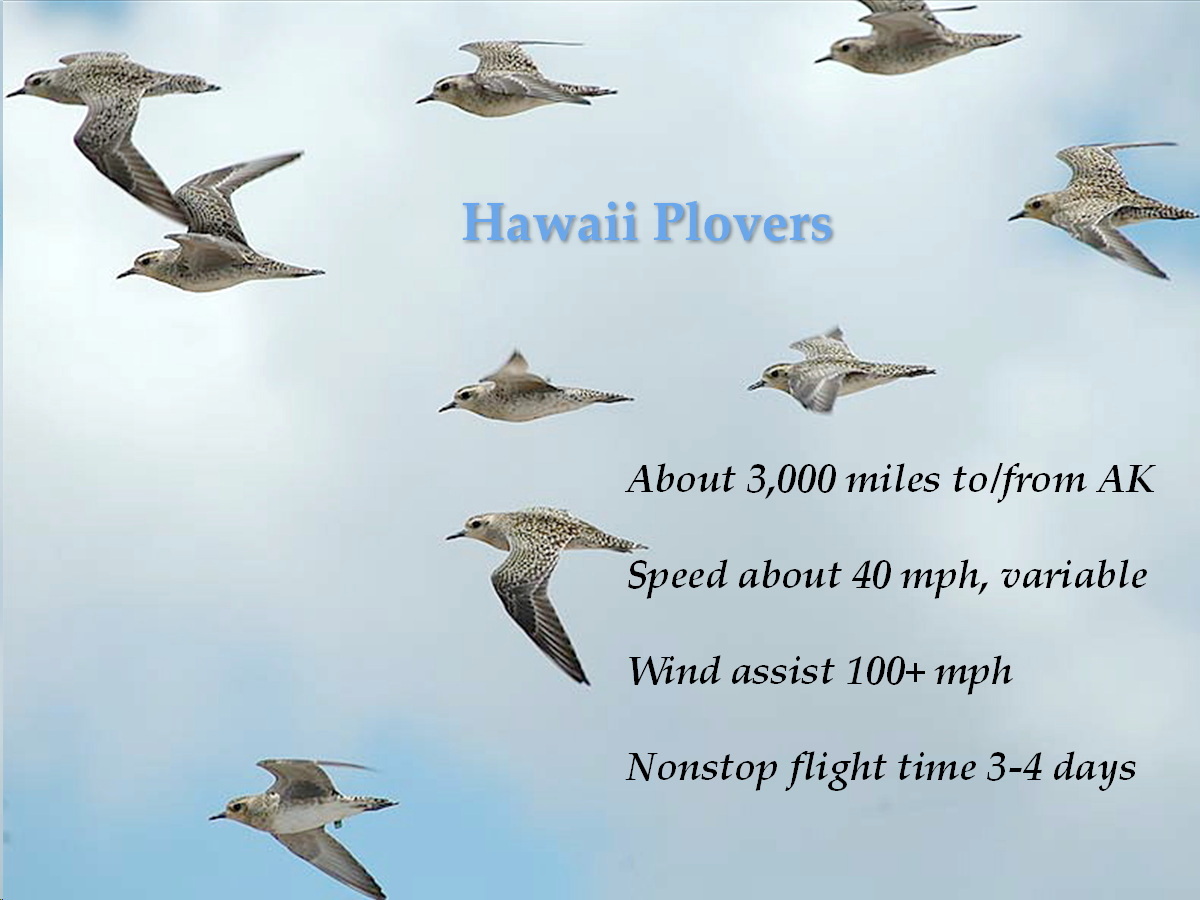
© Graphic by O.W. Johnson
Only the birds know why they come back to Hawaiʻi this early. Plover expert Wally Johnson says that July returnees either failed to raise chicks and gave up. Or the opposite. The birds had an excellent breeding season where chicks hatched, thrived and fledged in good time, allowing the parents to go home early. (I think of Hawaii as the kōlea’s home since they spend 9 months of the year here.)
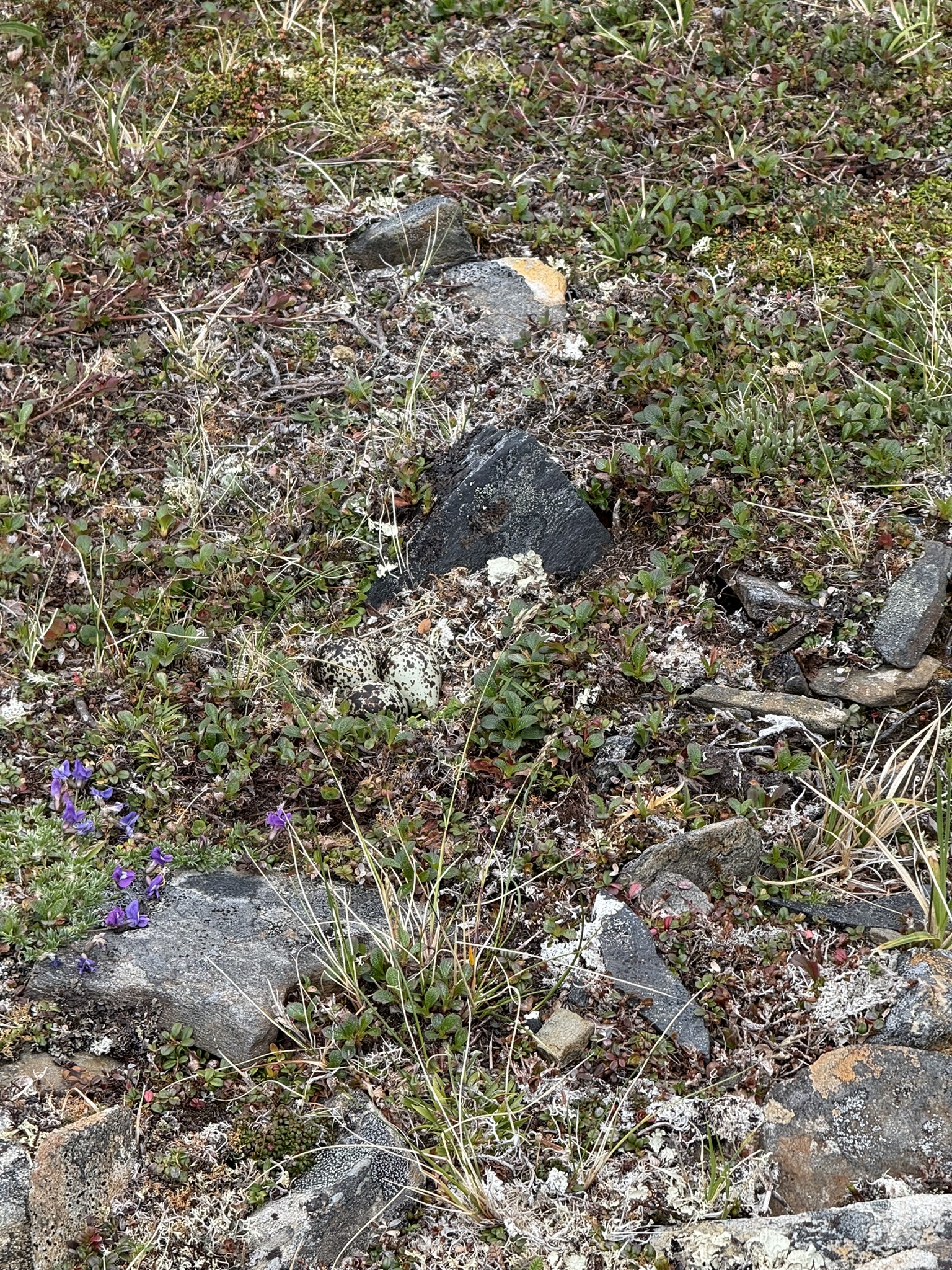
Three kōlea eggs in a Nome tundra nest June , 2025. Kōlea usually lay four. (Don’t see them? Look below.) ©Susan Scott
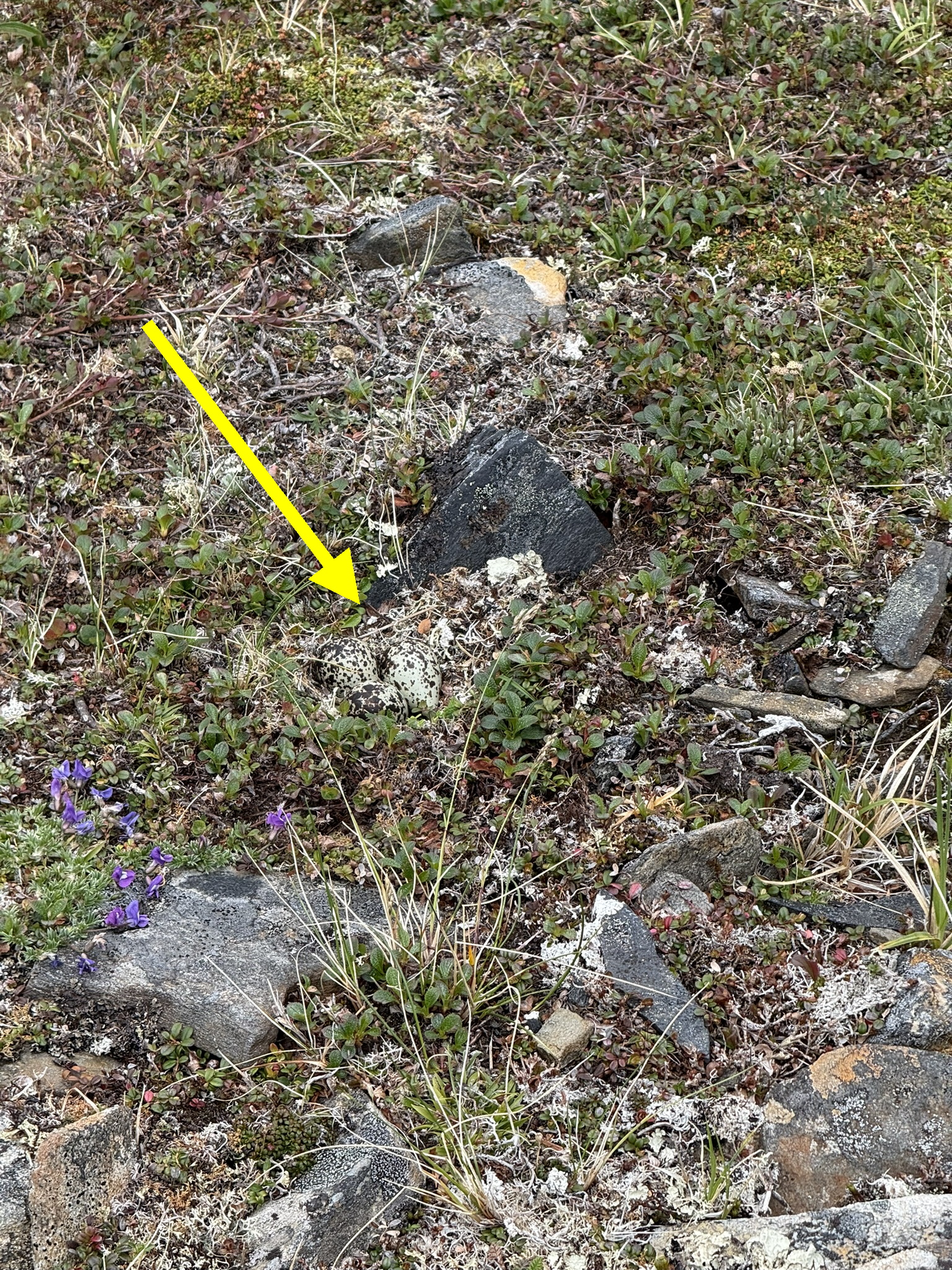
As long as food supplies last, the summer’s chicks stay in Alaska, fattening up on bugs and berries for their great leap south. How these youngsters know where to go on their first migration is one of nature’s mysteries.
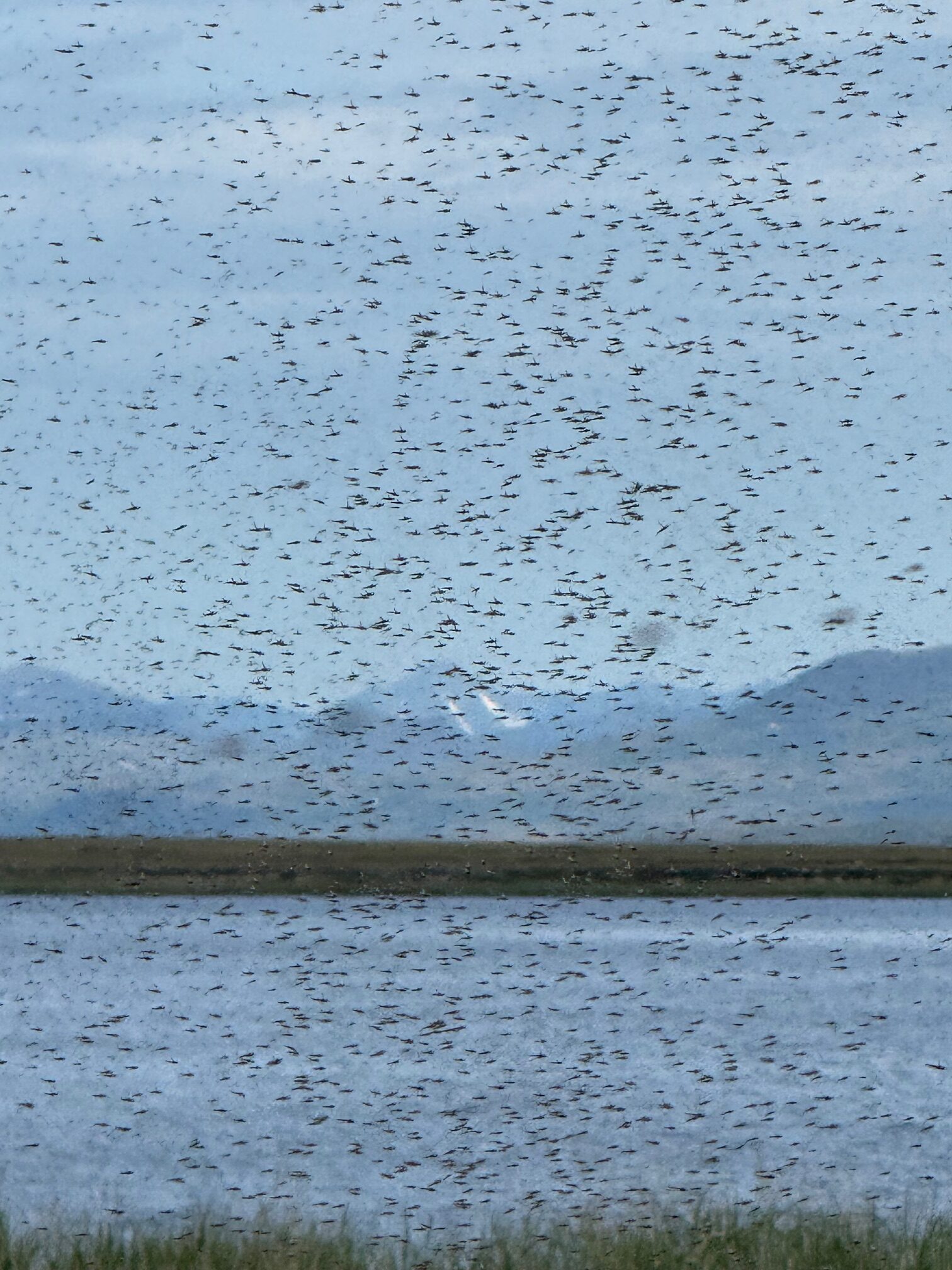
Nome residents call these nonbiting insects midges but some of us know them as gnats. Tundra insects provide chicks with ample food for fast growth. ©Susan Scott
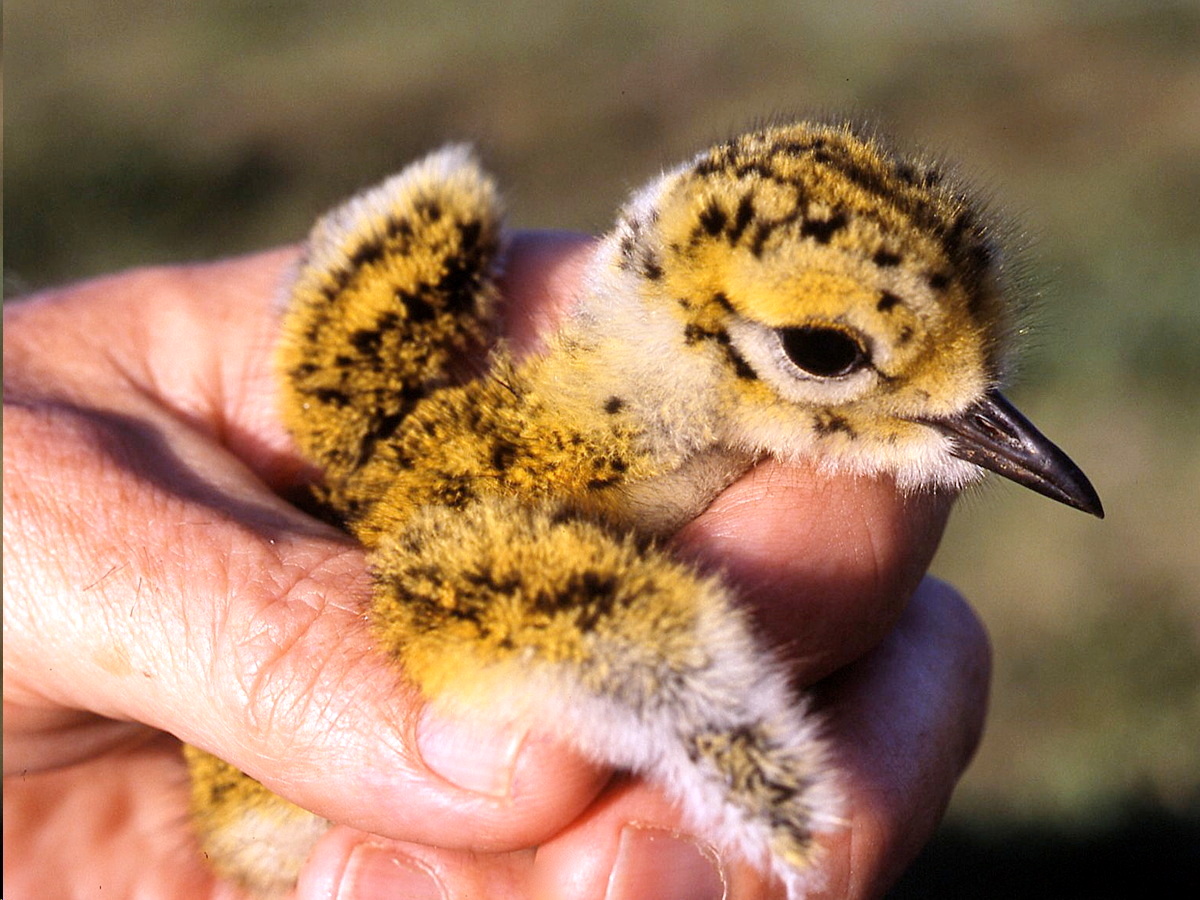
If all goes well, this kōlea chick’s little wings will be flying in about one month. © O.W. Johnson
It’s a perilous journey for adults as well as chicks, making the plovers’ arrival deserving of celebration. Hawaiʻi Audubon has got that covered. We’ve planned our second annual Welcome Home Kōlea Festival for Saturday, September 6th at Magic Island. Mark your calendars. The site reservation is confirmed. We will send reminders and times as the event grows closer.
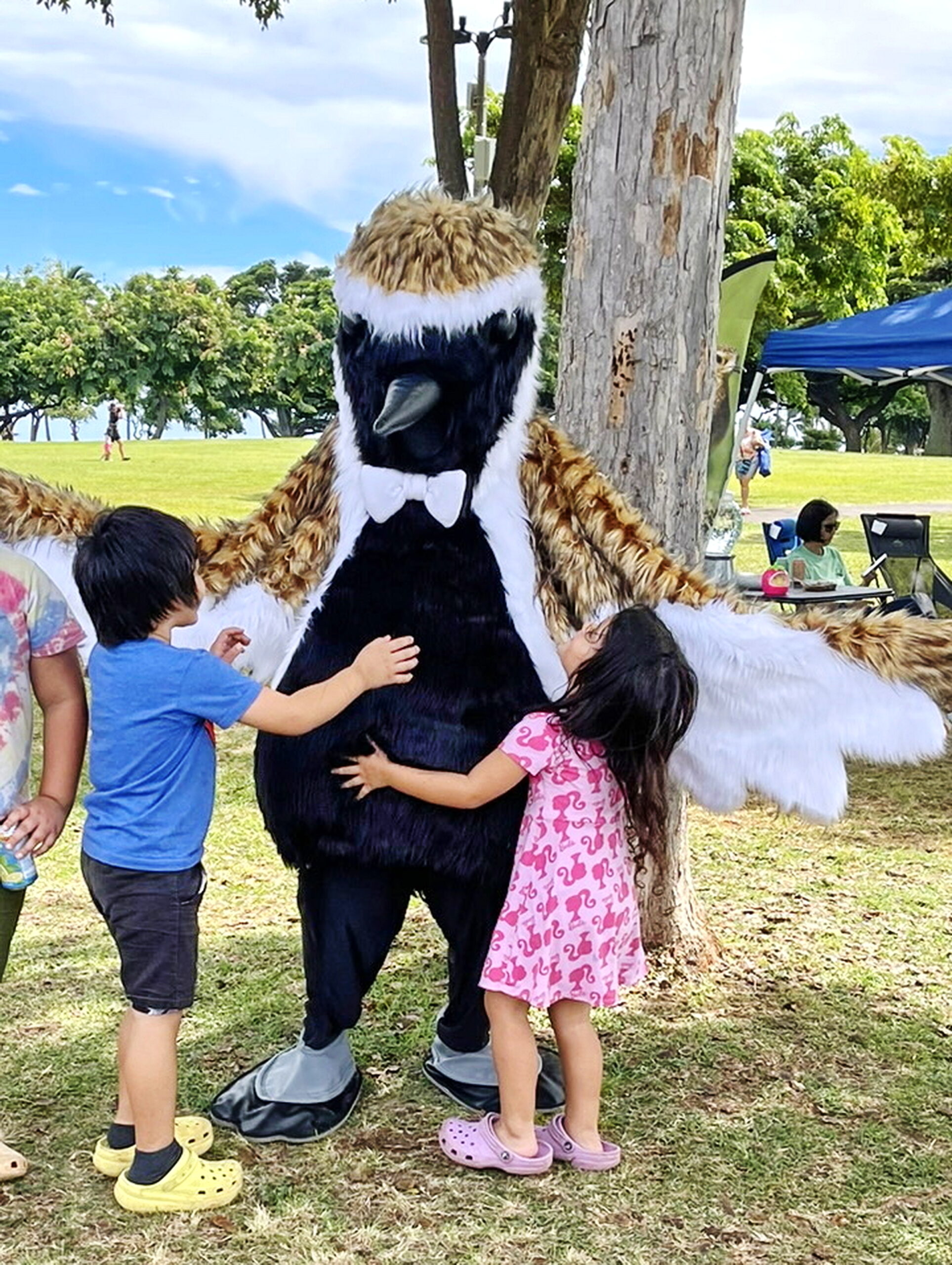
Kōlea Nui and two young fans at the “Welcome Home Kolea Festival” last year at Magic Island. ©Susan Scott
Please report arrival dates from now though November. This gives the summer’s chicks time to get here, find their winter site, and get counted. The 2025-2026 season’s head count of wintering birds starts December 1st and ends March 31st. That’s when the birds start gathering together for spring departure.
You can count anywhere but it helps spread us out if you sign up for specific places. Please notify me where you want to count plovers in the CONTACT tab above and I’ll sign you up. (Only I can put an X on the site location, which keeps email addresses private and prevents mischief to the site.)
In the meantime, thanks for sharing the thrill of your first kōlea sightings.
Chu-WEET, Susan Scott
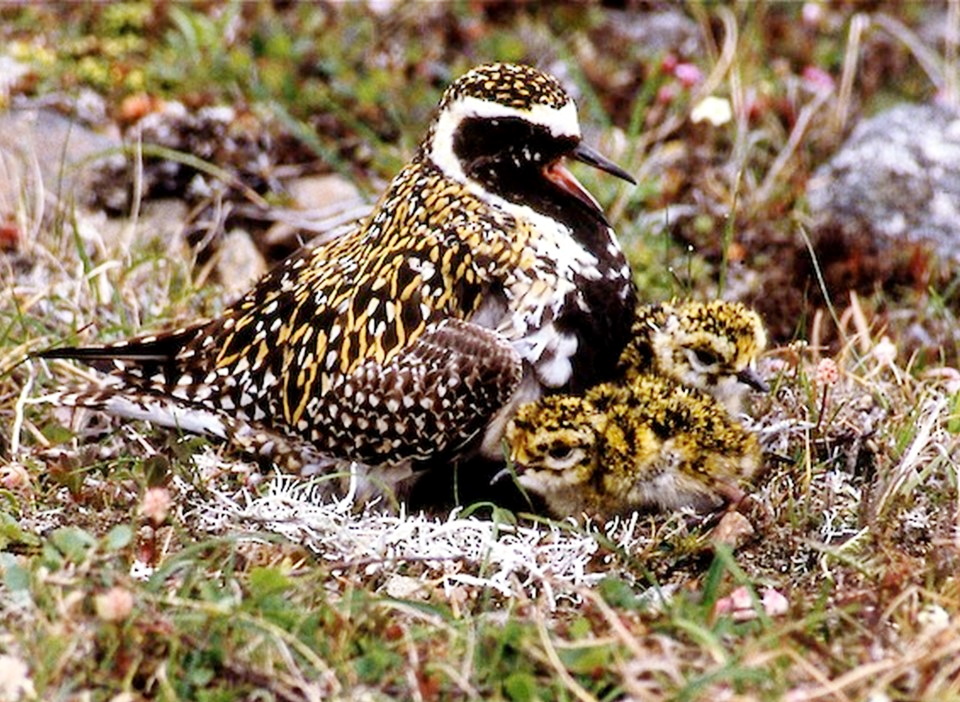
A kōlea dad guards his newly hatched chicks. Like domestic chickens, the youngsters forage for their own food as soon as they can walk. The chicks’ scurrying about makes them vulnerable to the predators on Alaska’s tundra. © O.W. Johnson